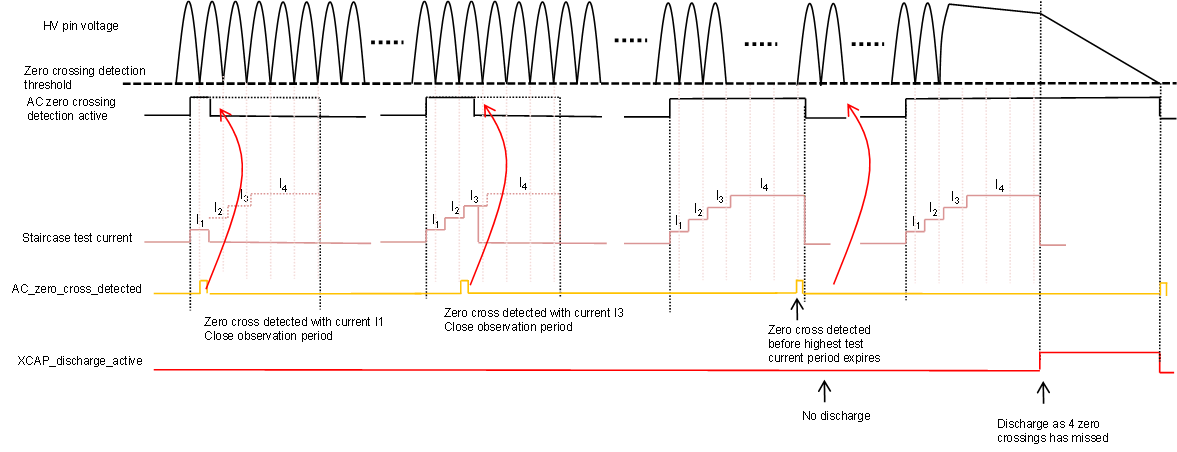SLUAAJ7 June 2022 UCC256402 , UCC256403 , UCC256404
- Abstract
- Trademarks
- 1UCC25640x Selection Guide
- 2UCC25640x Features Brief Overview
- 3UCC25640x Power Up Guidelines and Debugging Notes
- 4References
2.2.3 Test Current Injection for Zero Crossing Detection
 Figure 2-7 Xcap Discharge
Figure 2-7 Xcap Discharge - Test current I1 is applied to check if HV pin voltage is <9 V threshold.
- When HV pin voltage falls below 9 V, test current is turned off and controller waits 700 ms before applying I1 again.
- I1 test current is on for maximum of 12 ms. If HV pin does not satisfy <9 V requirement, test current is increased to I2, then I3 and finally, I4.
- I4 test current maximum on time is 48 ms.
- If zero crossing is not detected during the test current period, a discharge current of 11.5 mA (typical value) is applied for 350 ms from HV to GND as shown in Figure 2-7.